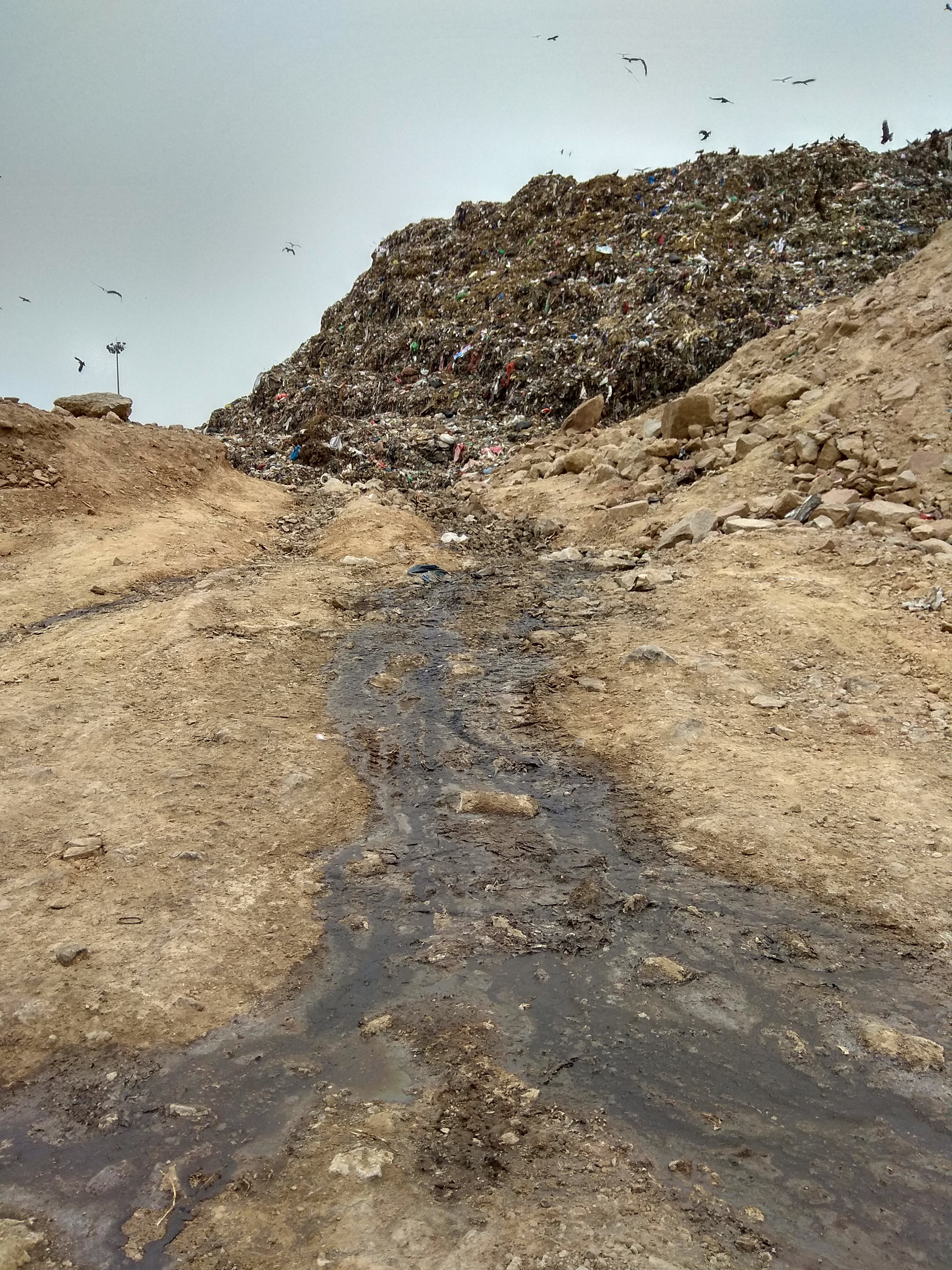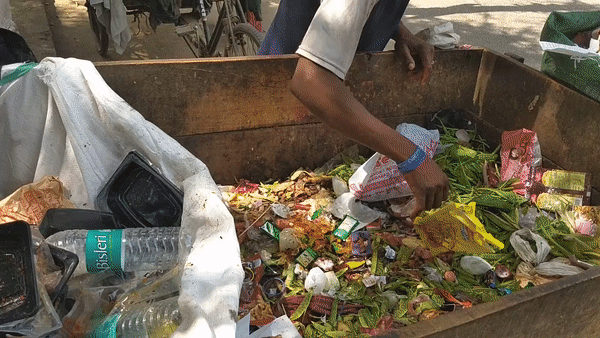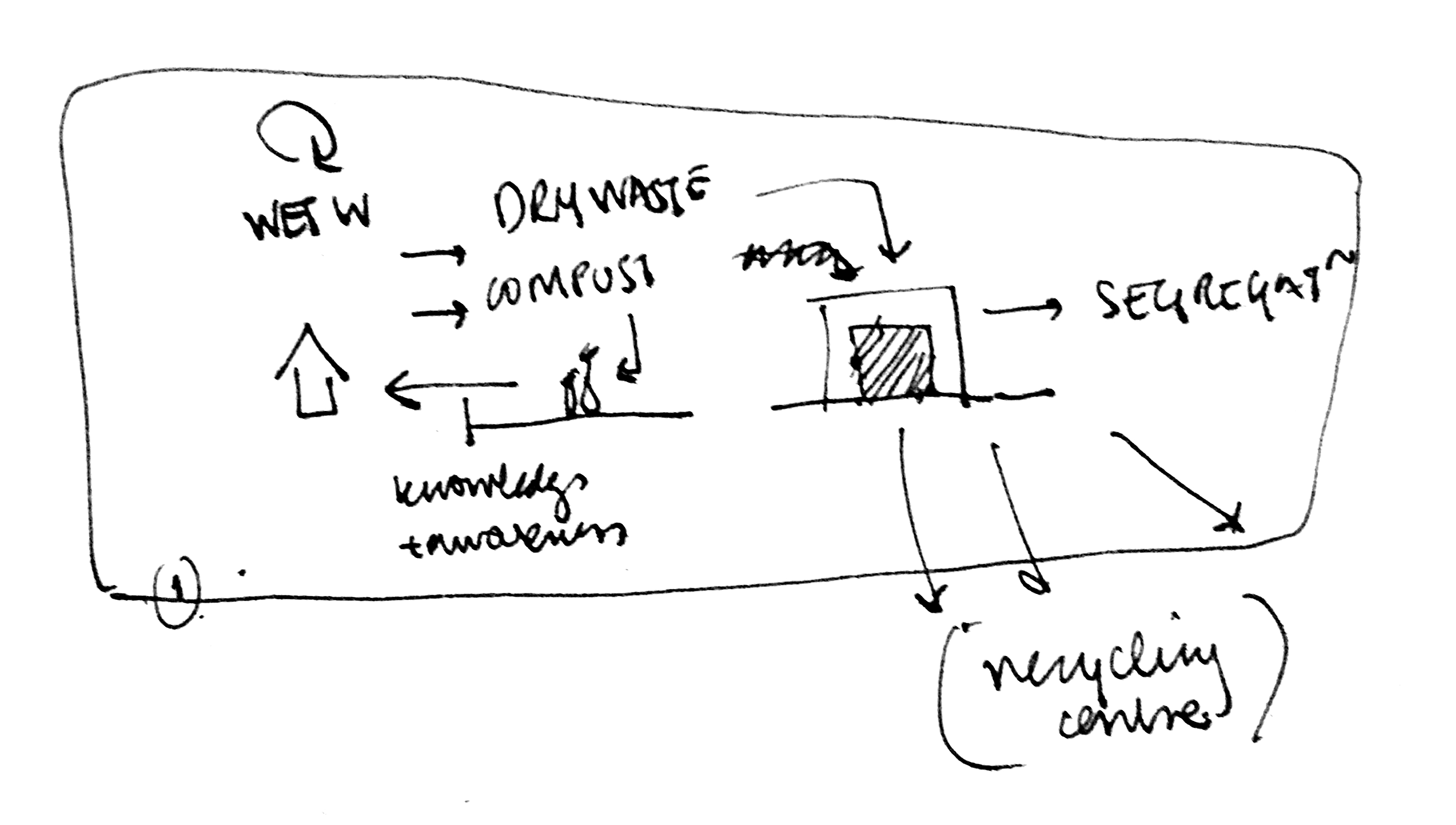
Where does our waste go?
STATUS:
Research + Idea
LOCATION:
DELHI (CHITTARANJAN PARK TO OKHLA TEKHAND)
TIMELINE:
MARCH-APRIL 2019
Research + Idea
LOCATION:
DELHI (CHITTARANJAN PARK TO OKHLA TEKHAND)
TIMELINE:
MARCH-APRIL 2019
The largely unseeable nature of waste streams in our cities makes it difficult to be aware about the perils of large-scale waste generation.
In March 2019, the team undertook a brief research trip in Delhi to follow our day’s waste in its journey around Delhi — to ultimately reach the landfill. That prompts us to explore role of design in making a better ecosystem of waste handling.
Through observation and conversations with waste workers, dhalao managers and truck drivers, we captured some insights about the waste ecosystem and the many opportunities it presents for intervention.
In March 2019, the team undertook a brief research trip in Delhi to follow our day’s waste in its journey around Delhi — to ultimately reach the landfill. That prompts us to explore role of design in making a better ecosystem of waste handling.
Through observation and conversations with waste workers, dhalao managers and truck drivers, we captured some insights about the waste ecosystem and the many opportunities it presents for intervention.
Leachate flowing out of waste in Okhla landfill located in the outskirts of Delhi

Lets see from start of the journey
At household levelWaste collected from different households is largely unsegregated. Residents collect them in a single bin without much segregation between organic and inorganic waste. One might see black polybags in those bin to save on cleaning and keep the bin clean from smell and liquid.
At neighbourhood level
Waste collected from different households is largely unsegregated. Residents collect them in a single bin without much segregation between organic and inorganic waste. One might see black polybags in those bin to save on cleaning and keep the bin clean from smell and liquid.
At city level
Waste collected from different households is largely unsegregated. Residents collect them in a single bin without much segregation between organic and inorganic waste. One might see black polybags in those bin to save on cleaning and keep the bin clean from smell and liquid.

Waste workers as the spine of the waste management
Waste workers are driving the waste management for our cities from collecting at households, to segregating at neighbourhood dumpyards and management at landfill sites. Yet they work as an informal sector without much incentives for them and their families. Waste workers also get to face social exclusion in the places they work and live.
Approach: Waste workers at the centre of our waste management ecosystem
Waste workers are driving the waste management for our cities from collecting at households, to segregating at neighbourhood dumpyards and management at landfill sites. Yet they work as an informal sector without much incentives for them and their families. Waste workers also get to face social exclusion in the places they work and live.
illustrating the role and relevance of waste worker in the waste ecosystem

Further opportunities
Waste workers are driving the waste management for our cities from collecting at households, to segregating at neighbourhood dumpyards and management at landfill sites.
1
STORAGE AND SEGREGATION SOLUTIONS AT HOUSEHOLD LEVEL
Product and intervention to not just segregate but converting them into composts. Agents of composting can nudge and assist the communities to adopt to such measures.
STORAGE AND SEGREGATION SOLUTIONS AT HOUSEHOLD LEVEL
Product and intervention to not just segregate but converting them into composts. Agents of composting can nudge and assist the communities to adopt to such measures.

2
TRANSPORTATION STRATEGIES - FROM HOUSEHOLD TO CART TO DHALAO TO TRUCKS
Understanding the needs and challenges in the current system to address a more suited and sustaining system for the future cities
TRANSPORTATION STRATEGIES - FROM HOUSEHOLD TO CART TO DHALAO TO TRUCKS
Understanding the needs and challenges in the current system to address a more suited and sustaining system for the future cities

3
REIMAGINE THE ROLE OF DHALAO IN PUSHING THE CHANGE
Bringing changes in the operation systems and the architecture of Dhalaos. And, Dhalaos to play a key role in managing waste at the neighbourhood level and acting as a strong link between waste and the community.
REIMAGINE THE ROLE OF DHALAO IN PUSHING THE CHANGE
Bringing changes in the operation systems and the architecture of Dhalaos. And, Dhalaos to play a key role in managing waste at the neighbourhood level and acting as a strong link between waste and the community.

CASE STUDY
Dhalao 2.0
Project team -Timeline -
Status -
Location -
How can Dhalaos be more than waste transit points?
Neighbourhood garbage collection centres (dhalaos) form an important part of visible waste infrastructure.
To visualize Dhalaos as an asset to the neighbourhoods, the project imagines it to be a place of regeneration of energy and education. It aims to address the perception around waste and explore possibilities to strengthen the relationship we have with waste.